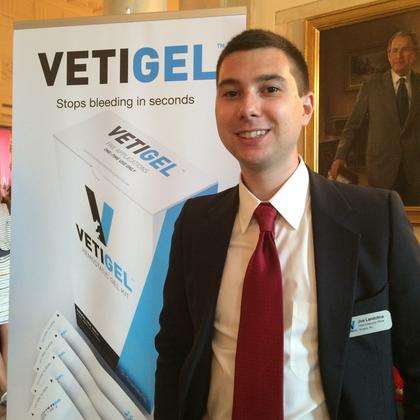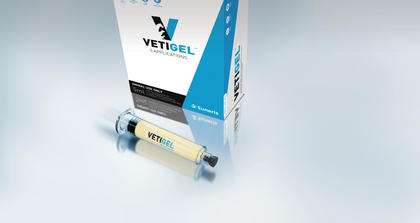Suneris's Strategy for Revolutionizing Animal Health Care
 Suneris is a biotech company working on a potentially game-changing product, a new wound care gel called Vetigel that can staunch bleeding in under 12 seconds.
Suneris is a biotech company working on a potentially game-changing product, a new wound care gel called Vetigel that can staunch bleeding in under 12 seconds.
Bioscience Technology (BST) recently chatted with Joe Landolina (JL), the 22-year-old co-founder of Suneris. He talked about how his company came together along with his recent experience at the White House’s Demo Day where he was a featured speaker.
BST: Where’d the inspiration for Suneris come from?
JL: After discovering the technology that became Vetigel I saw a big need in the market for a product that could stop bleeding quickly and started Suneris with Isaac to bring the product to those who needed it.
BST: Can you elaborate on how the company came together?
JL: As a freshman at New York University (NYU), I entered Vetigel into a business competition, where I met Suneris CFO and co-founder Isaac Miller. Together we went up against graduate students and university professors, and successfully secured second place. Our company has now grown to over 25 employees, we have officially opened Vetigel pre-orders, and we plan to begin shipments to U.S. veterinarians in late summer 2015 and European vets early next year.
BST: Can you discuss how you created the gel?
JL: When I was growing up as a young kid, I loved inventing things. I grew up on my grandfather’s vineyard in Pine Bush, New York, where he taught me how to manipulate biochemistry. Experimenting on his vineyard sparked my love for science, which led to me becoming a chemical and biomedical engineering major at NYU. I spent hours in the library studying polymer science to develop a prototype that first applied on rats, which had their livers and carotid arteries sliced. Once I learned that the gel worked to stop bleeding successfully, I used the extracellular matrix matter from skin as my blueprint to create the gel using plant-based hemophilic polymers made from polysaccharides.
BST: How long did it take to make the first batch?
JL: While I stumbled onto the technology, getting the technology to where it could become a saleable product took 4 years.
BST: What was the experimentation process like?
JL: When making a device to stop bleeding you must ensure efficacy but it must maintain a high level of safety. The majority of tests that were done focused on improving the way the product works and maintained a high level of safety.
BST: Vetigel is plant-based, but what were the benefits of creating the gel with this compound instead of opting for a more synthetic manufacturing process?
JL: Plant-based polymers are renewal resources and more easily sourced and very biocompatible, so the body will have well characterized reaction to them, or lack thereof.
 BST: The gel is aimed at the veterinary market to assist in critical-care management. What made you decide to create this product for that target audience first?
BST: The gel is aimed at the veterinary market to assist in critical-care management. What made you decide to create this product for that target audience first?
JL: By moving into the animal health market first we felt we could make a big impact in a small market as well as use it as a proving ground before we moved into human indications. The veterinary market is a forgotten market as most of the hemostatic products available in that space are less efficacious, if available, as most hemostatic agents are initially geared toward the human market.
READ MORE: Five Biotech Startups to Check Out This Month
BST: You were a featured presenter at the White House’s Demo Day. Please give a run-down of what happened that day.
JL: I feel very fortunate to have participated in the first ever White House Demo Day on August 4. The Demo Day event featured several entrepreneurs from all walks of life and gave them a chance to turn their ideas into indispensable products and services. I was able to demo Vetigel, discuss how Vetigel came to be and further emphasize the company’s vision for how this technology can change the way the world looks at wound care.
BST: What’re some of the rewards you’ve had in building Suneris?
JL: Seeing my idea turn into a product that will save lives.
BST: What about some of the challenges you’ve faced as an entrepreneur?
JL: Being a young entrepreneur in a very research focused market/industry has been challenging. With the support of NY community and our team of advisors we were able to build a strong presence to build the credibility to move forward.
BST: What’s slated for Suneris for the rest of 2015?
JL: Suneris is working to attain FDA approval for the technology for human-use potential, including military, emergency medicine, and human surgical use. These additional uses will require human-use testing and research. We are also hoping to open a new facility by the middle of next year, and hire 300 more people in the near future.
• Conference agenda announced:
The highly anticipated educational tracks for the 2015 R&D; 100 Awards & Technology Conference feature 28 sessions, plus keynote speakers Dean Kamen and Oak Ridge National Laboratory Director Thom Mason. Learn more.





